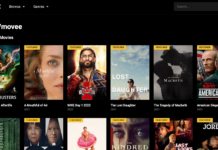
Today’s online advertising methods have helped to improve the world of marketing vastly. Digital marketing is much easier because it allows users to create successful ad campaigns and get them up and running in less time.
But as with any advertising method, there are pros and cons associated with digital marketing. While it has many benefits, getting started with digital marketing can be difficult if you are new to the process. Learning how to effectively capture the attention of your target audience using a digital format for the first time can be tricky. Plus, you have all the different online platforms to consider when creating your marketing strategy. Consumers access the internet in multiple ways, such as on their home computer, their laptop, tablet, or smartphone device. And it is up to you to decide on the best ways to place your ads in the digital world.
That is where Programmatic Advertising comes in. This form of advertising helps solve many of the issues that marketers have with creating online advertising strategies. But how exactly does it work?
Understanding Programmatic Advertising
When you create an online advertisement, you have to consider the different advertising platforms. Programmatic advertising takes care of that problem. It works as the automated buying and selling feature of online advertising. The automation helps make transactions faster and more efficient. It works by streamlining the process and combining all your digital advertising efforts into one convenient technology platform.
Programmatic platforms used with this form of advertising have been adding to their database and inventory as technology improves. They are enhancing areas so that any format and any channel may be accessed programmatically today. That includes ads showing up on mobile devices, desktop computers, laptops, tablets as well as on TV using video advertising.
An Example of Programmatic Advertising
If you are interested in adding programmatic advertising to your marketing strategies, it can be useful to have an example to refer back to once you get started.
Consider an advertiser who wants to sell more off-road vehicles or ATVs. The company would hire a programmatic advertising platform that can identify potential customers based on factors such as:
- Demographics – Male or female consumers and their age range.
- Geography – Are the consumers located in areas where riding ATVs is popular?
- Interests – finding consumers who are interested in similar outdoor activities
- Behaviors – how engaged are these consumers in off-road driving and ATVs
- Time of day – what time of day is best for displaying these ads to potential consumers?
- Weather – Will consumers be more likely to pay attention to your ads while it is sunny outdoors or rainy?
- Device – which device is best to display the ads on that your target audience is likely to use, smartphones, home computers, or TV?










